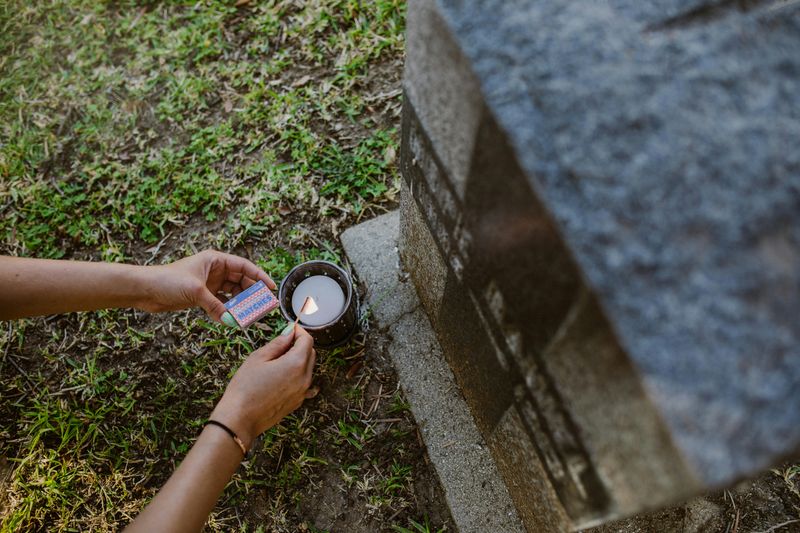Losing someone you love deeply changes everything, and the path forward can feel impossible to navigate. Healing doesn’t happen overnight, but small, intentional daily habits can help you process grief and gradually rebuild your sense of peace. The gentle practices shared here offer comfort, connection, and a way to honor your feelings while moving toward hope.
1. Start Each Morning with Gentle Reflection or Journaling
Morning moments hold special power when you’re grieving. Before the day rushes in, sitting quietly with your thoughts gives you a chance to acknowledge how you’re really feeling without judgment.
Writing down your emotions, memories, or even just a few scattered words can release what’s weighing on your heart. You don’t need perfect sentences or profound insights—just honest expression. Some mornings you might write about sadness, others about gratitude for the time you shared.
This practice creates a safe container for your grief. Over time, your journal becomes a record of your healing journey, showing you how far you’ve come even on the hardest days.
2. Designate a Special Memory Space or Altar
Creating a physical place dedicated to someone you’ve lost gives your grief somewhere to live. This isn’t about dwelling in sadness—it’s about honoring connection. Your memory space might include photographs, treasured objects they gave you, or items that remind you of shared experiences.
Candles, flowers, or written notes can be added whenever you feel moved. Having this designated spot means you can visit when you need to feel close to them. It becomes a sacred corner where memories feel protected and celebrated.
Many people find comfort in changing their altar with seasons or adding new items as memories surface, keeping the relationship alive in meaningful ways.
3. Take a Comforting Walk in Nature
Nature has an incredible ability to hold our pain without asking anything in return. Walking among trees, beside water, or through open fields allows your body to move while your mind processes emotions. Fresh air and natural surroundings offer perspective that walls cannot provide.
You don’t need to walk far or fast. Even fifteen minutes outside can shift your mood and ease the heaviness that grief brings. The rhythm of your steps becomes meditative, helping anxious thoughts settle.
Many grieving people discover that nature witnesses their tears without judgment and somehow makes them feel less alone in their sorrow.
4. Write or Speak to the Person You Lost
Death ends a life, but it doesn’t have to end a relationship. Writing letters to your loved one or speaking aloud to them keeps the conversation going. Share what’s happening in your life, tell them you miss them, or say things you wish you’d expressed before.
This practice isn’t about denial—it’s about maintaining emotional connection. Whether you believe they hear you or simply find comfort in the expression, the act itself brings relief. Some people keep these letters, while others burn or bury them ceremonially.
Speaking or writing to someone you’ve lost validates that your love continues beyond death’s boundary.
5. Schedule Quiet Time for Mindfulness or Breath Work
Grief often makes breathing feel difficult, as if sorrow sits directly on your chest. Intentional breath work helps release that tightness and brings you back to the present moment. Even five minutes of focused breathing can calm your nervous system when emotions feel overwhelming.
Mindfulness practices teach you to observe feelings without being consumed by them. You notice sadness, anger, or emptiness, then gently return attention to your breath. This isn’t about pushing emotions away—it’s about creating space around them so they don’t swallow you whole.
Regular practice builds emotional resilience, giving you tools to navigate grief’s unpredictable waves.
6. Reach Out or Connect with Supportive People
Isolation intensifies grief, making everything feel heavier and more hopeless. Reaching out to someone who understands—whether a friend, family member, or support group—reminds you that you’re not alone. Sharing your feelings with someone who truly listens can lift burdens that feel unbearable when carried solo.
You don’t need to explain everything or put on a brave face. Authentic connection happens when you can be exactly where you are emotionally. Sometimes just sitting quietly with someone who cares is enough.
Grief support groups connect you with others walking similar paths, offering validation and understanding that well-meaning friends might not fully grasp.
7. Express Yourself Through Creativity
When words fail, creativity speaks. Painting, drawing, playing music, or crafting gives grief a voice beyond language. You don’t need artistic talent—this is about expression, not perfection. Colors, sounds, and textures can communicate feelings that thoughts cannot capture.
Creative activities engage different parts of your brain, offering relief from the mental loops grief creates. Making something with your hands grounds you in the present and provides a sense of accomplishment when everything else feels out of control.
Many people discover that their creative expressions become treasured records of their healing journey, showing transformation through difficult seasons.
8. Set Small, Manageable Self-Care Goals
When you’re grieving, basic tasks can feel impossibly difficult. Setting tiny, achievable goals helps you function when motivation disappears. Today’s goal might simply be taking a shower, eating one nutritious meal, or getting out of bed by noon.
These aren’t grand accomplishments, but they matter deeply when grief makes everything hard. Checking off even small tasks builds momentum and reminds you that you’re still capable. Be gentle with yourself—some days completing one thing is a victory.
Self-care during grief isn’t about bubble baths and face masks; it’s about meeting your most basic needs with compassion when doing so feels nearly impossible.
9. Read Uplifting, Healing Material
Books about grief, healing memoirs, or spiritual texts can offer companionship when you feel most alone. Reading others’ experiences with loss reminds you that what you’re feeling is normal and that people do survive devastating heartbreak.
Choose materials that resonate with your beliefs and emotional state. Some days you might need poetry that validates your pain; other times you’ll seek stories of hope and resilience. Uplifting doesn’t mean denying sadness—it means finding words that help you make sense of your experience.
Many grieving people find comfort in returning to certain passages repeatedly, drawing strength from wisdom that speaks directly to their hearts.
10. Move Gently Through Stretching, Yoga, or Walking
Grief lives in your body as much as your mind, creating tension, exhaustion, and physical pain. Gentle movement helps release what’s stored in your muscles and joints. Stretching, yoga, or slow walking aren’t about fitness—they’re about reconnecting with your physical self when emotions feel overwhelming.
Movement increases endorphins, which can temporarily lift heavy moods. It also reminds you that your body is still here, still functioning, still carrying you through each difficult day. Start small—even five minutes of stretching counts.
Listen to what your body needs rather than pushing through. Some days movement energizes; other days rest is the wiser choice.
11. Allow Yourself Moments of Joy Without Guilt
One of grief’s cruelest tricks is making you feel guilty for experiencing happiness. You might catch yourself laughing, then immediately feel awful, as if joy betrays your loved one’s memory. But allowing moments of lightness doesn’t diminish your love or loss.
Your person wouldn’t want your life defined only by sadness. Finding small joys—a funny video, a beautiful sunset, a delicious meal—honors the fullness of being human. These moments don’t erase grief; they exist alongside it, proving you can hold both sorrow and happiness.
Permission to feel good, even briefly, is essential for healing and helps you remember that life still offers gifts worth receiving.
12. Develop Meaningful Rituals to Honor Your Loved One
Rituals transform grief into something purposeful. Lighting a candle on difficult anniversaries, cooking their favorite meal, visiting a meaningful place, or donating to causes they cared about keeps their memory alive in active, intentional ways.
These practices acknowledge that while they’re gone, the impact they made continues. Rituals provide structure for your grief, giving you specific times and ways to honor your feelings rather than being ambushed by them unexpectedly.
Creating new traditions around remembrance helps integrate loss into your ongoing life story, allowing love to persist even as you learn to live without their physical presence beside you.












